No one knows who will come out on top among the 39 candidates running for president in this Sunday’s election in Ukraine, but one thing is nearly certain: The winner won’t be a pro-Russian candidate. As Ukraine marks five years since its democratic revolution, Russia’s war against Ukraine has solidified the country’s path toward Euro-Atlantic integration. Despite differences on domestic policies, the top contenders all support Ukraine’s eventual membership in NATO and the EU.
With Russia’s continued occupation of Crimea and war in the Donbas, Ukraine also remains a key arena of contestation between Russia and the West. Ukraine is a large European country with a population of 45 million people. It is rich in natural resources and human capital, and its success or failure in achieving long-lasting democratic and economic reforms can tip the balance in great power contestation. The Kremlin seeks to prevent Ukraine from moving toward the West by keeping it in a permanent “grey zone.” To achieve that goal, Russia continues to destabilize Ukraine through conventional and nonconventional military means while seeking to undermine Ukraine’s democratic and economic reform process. Deterring an increasingly aggressive Russia must start in Ukraine.
A litany of Russian attacks
Continued Russian military operations in the Donbas have cost over 13,000 Ukrainian lives and displaced over 1.5 million Ukrainians since 2014. Moscow opened a new front against Ukraine in November 2018. In that attack, the Russian coast guard fired on and seized three Ukrainian naval vessels and detained 24 Ukrainian crew members as they transited the Kerch Strait. This followed a months-long Russian effort to control the Sea of Azov through regular harassment and detention of Ukrainian commercial ships, as well as foreign vessels seeking passage to Ukrainian ports.
Deterring an increasingly aggressive Russia must start in Ukraine.
Russia has also used Ukraine as a test-lab for its arsenal of political warfare. This includes information warfare, cyberattacks, the use of energy supplies for political ends, and the export of corruption to gain a foothold in politics. While Russian interference in Western elections came as a surprise to many, Russia has a long track record of intervening in Ukraine’s elections since 2004. Ukraine’s experience is thus a bellwether for assessing the Russian tactics that may be deployed against the West.
Of course, Russian political warfare does not stop when the ballot box closes. Russian disinformation on social media platforms targeted Ukraine well before the U.S. or European elections, and Ukraine remains its top target. Russian state media, social media trolls, and bots spread and amplify false stories about Ukraine to undermine the legitimacy of the government and to divide Ukrainian society. Some recent stories claim that Ukrainian children are forced to play with stuffed Adolf Hitler dolls and that Ukraine’s national church “is becoming the Christian version of ISIS.”
There have been at least 15 known Russian-attributed cyberattacks on Ukraine since 2014. A December 2015 cyberattack caused a blackout affecting over 230,000 Ukrainians. The malware used in that attack has been detected in electric utilities in the United States. In June 2017, the “NotPetya” virus, which the United States attributed to the Russian military, originated in Ukraine and spread to 64 countries, including the United States, and affected major international companies, logistical operators, government agencies, telecommunication providers, and financial institutions.
Ukraine’s good news and bad news
Despite Russia’s determination to see Ukraine fail, Kyiv has made significant strides the last five years. It reformed its energy sector, set up an anti-corruption infrastructure, and stabilized its economy. The economy contracted 17 percent between 2014 and 2015 but returned to growth in 2016, and the International Monetary Fund (IMF) forecasts Ukraine to grow by 2.7 percent this year.
The government pushed through painful reforms by raising gas prices to market levels as required by the IMF, thus removing a core opportunity for graft. The government also launched a transparent online bidding system for public procurement. Taken together, these economic reforms returned up to $6 billion in annual revenues.
Lastly, one of the most tangible reforms may concern healthcare, where primary care is now free and of higher quality. These reforms have been achieved through the so-called “sandwich model” of top-down pressure from international institutions, such as the IMF and European Bank of Reconstruction and Development (EBRD); Western governments, including the United States; and bottom-up pressure from Ukraine’s thriving and active civil society and reformers in parliament. That’s the good news.
The bad news is that Ukraine’s new anti-corruption institutions are either compromised or under constant political attack. The National Anti-Corruption Bureau of Ukraine (NABU) is meant to investigate high-level corruption and is supported by Ukrainian civil society watchdogs. Since 2015, NABU has sent 189 cases to court, but convictions remain elusive because Ukraine has failed to reform its judicial sector. U.S. Ambassador Marie Yovanovitch has rightfully called for replacing the head of the Special Anti-Corruption Prosecutor’s Office (SAPO), who was recorded coaching suspects on how to avoid corruption charges.
In 2016, Ukraine launched an e-declaration system, which requires public officials to declare their income and assets. This system, hailed for its transparency, was meant to empower anti-corruption agencies and civil society to investigate and hold public servants accountable if they held assets that far exceeded their public incomes. However, the agency charged with verification, the National Agency on the Prevention of Corruption, has failed to verify asset declarations for more than two years.
Then, last month, Ukraine’s Constitutional Court eliminated the illicit enrichment offense from the criminal code. This ruling means that public officials can no longer be prosecuted for receiving potentially illicit sources of income. The decision invalidated 65 cases that NABU had investigated. As a result, without the ability to prosecute, the e-declaration system is now basically useless. This court ruling was a major setback in the war against corruption.
Until the Ukrainian government makes a serious effort to tackle corruption, it will remain a threat to Ukraine’s development, an obstacle to its European path, and a vulnerability that the Kremlin will exploit.
America’s role
The United States has led the international effort to help Ukraine defend itself against Russian aggression. The Trump administration rightfully approved the sale of 210 Javelin anti-tank missiles to Ukraine last spring. U.S. troops have exercised together with Ukrainian soldiers, and U.S. special operations forces continue to train Ukrainian military forces in Western Ukraine. This legislative body has consistently authorized hundreds of millions in military aid to Ukraine, with $250 million authorized in the 2019 National Defense Authorization Act. These funds and programs have gone a long way to secure Ukraine.
Since 2014, the U.S. government has sanctioned 762 individuals and entities under the combined authorities of Ukraine-related executive orders, the Countering America’s Adversaries Through Sanctions Act (CAATSA), and cyber-related authorities. This is significant. Most recently, on March 15, 2019, the United States—in coordination with the European Union, Canada, and Australia—sanctioned six Russian individuals and eight entities in connection with the Kerch attack and illegitimate elections in the so-called Donetsk People’s Republic. Coordination of sanctions with U.S. allies is an important signal of continued Western unity. These most recent sanctions, however, are neither commensurate with the degree of Russian aggression nor do they signal strong Western resolve to impose significant costs on Russia.
Sanctions against Russian entities and individuals should continue to be a core tool of a U.S. strategy to deter further Russian aggression. It is critical that future sanctions, especially those against Russian energy companies, be coordinated with European allies. However, sanctions should comprise one part of a broader U.S. strategy. The United States should continue to put pressure on Kyiv to institute judicial and anti-corruption reforms and remain steadfast on the conditionality of assistance with the EU and international institutions. Continued high-level bilateral engagement with the Ukrainian government will also send a signal to Russia that Ukraine remains a priority to the United States.
Ukraine cannot be permanently relegated to the “grey zone.”
Other elements of this strategy should be increased U.S. investment in countering Russian influence in Ukraine and Eastern Europe, supporting independent media and civil society in the region, and closing loopholes in our financial system that enable illicit activities. The Defending American Security from Kremlin Aggression Act of 2019 (DASKA) calls for the establishment of a National Fusion Center to Respond to Hybrid Threats, a Countering Russian Influence Fund to be used in countries vulnerable to Russian malign influence, and closer coordination with allies (sections 704, 705, 706). These efforts are long overdue, and Congress should act quickly to pass DASKA.
Ukraine will need continued U.S. commitment to its territorial integrity and resolve to impose costs on Russia for escalation. Ukraine cannot be permanently relegated to the “grey zone.” Moscow sees a successful democratic Ukraine as a threat to President Vladimir Putin’s authoritarian regime. It is in Russia’s interest to see Ukraine’s democratic and economic reforms fail. It should be our mission to ensure that they do not.
The Brookings Institution is committed to quality, independence, and impact.
We are supported by a diverse array of funders. In line with our values and policies, each Brookings publication represents the sole views of its author(s).

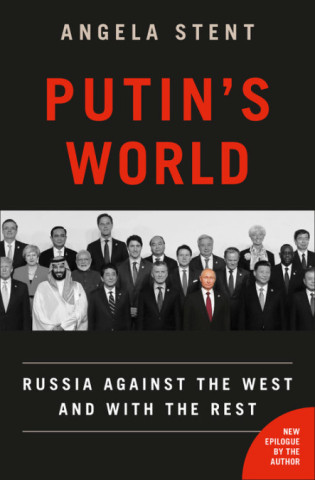

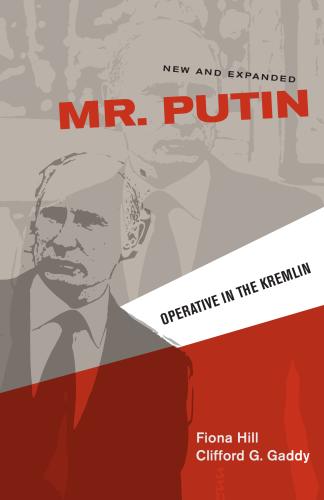
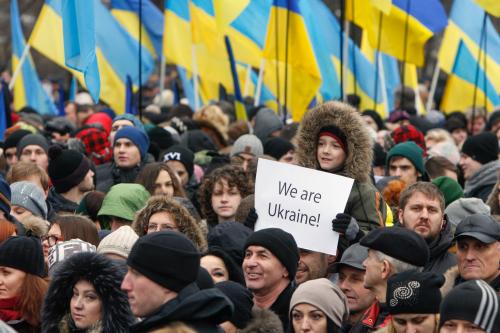


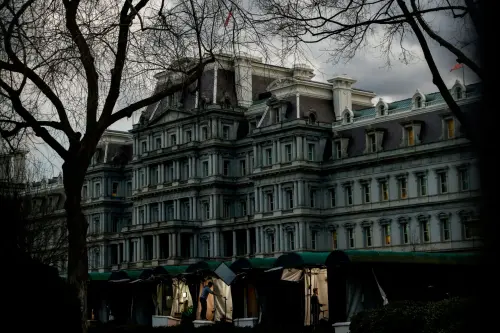

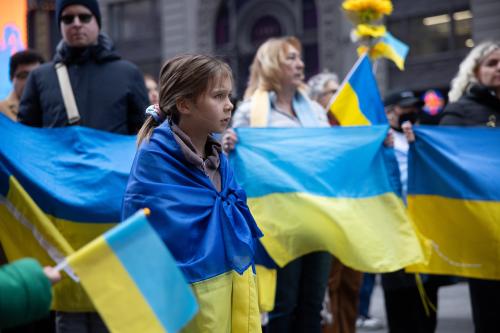
Commentary
Want to know what’s next in Russian election interference? Pay attention to Ukraine’s elections
March 28, 2019